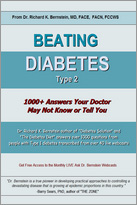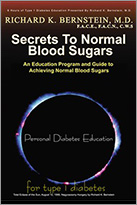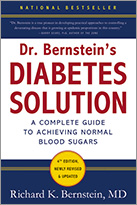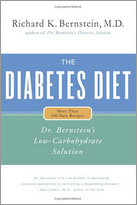by Mary Enig, PhD, and Sally Fallon
October 2000
Nourishing Traditions: The Cookbook that Challenges Politically Correct Nutrition and the Diet Dictocrats, New Trends Publishing
Classification of Fatty Acids by Length
Researchers classify fatty acids not only according to their degree of saturation but also by their length.
Short-chain fatty acids have four to six carbon atoms. These fats are always saturated. Four-carbon butyric acid is found mostly in butterfat from cows, and six-carbon capric acid is found mostly in butterfat from goats. These fatty acids have antimicrobial properties-that is, they protect us from viruses, yeasts and pathogenic bacteria in the gut. They do not need to be acted on by the bile salts but are directly absorbed for quick energy. For this reason, they are less likely to cause weight gain than olive oil or commercial vegetable oils.27 Short-chain fatty acids also contribute to the health of the immune system.28
Medium-chain fatty acids have eight to twelve carbon atoms and are found mostly in butterfat and the tropical oils. Like the short-chain fatty acids, these fats have antimicrobial properties; are absorbed directly for quick energy; and contribute to the health of the immune system.
Long-chain fatty acids have from 14 to 18 carbon atoms and can be either saturated, monounsaturated or polyunsaturated. Stearic acid is an 18-carbon saturated fatty acid found chiefly in beef and mutton tallows. Oleic acid is an 18-carbon monounsaturated fat which is the chief component of olive oil.
Another monounsaturated fatty acid is the 16-carbon palmitoleic acid which has strong antimicrobial properties. It is found almost exclusively in animal fats. The two essential fatty acids are also long chain, each 18 carbons in length. Another important long-chain fatty acid is gamma-linolenic acid (GLA) which has 18 carbons and three double bonds. It is found in evening primrose, borage and black currant oils. Your body makes GLA out of omega-6 linoleic acid and uses it in the production of substances called prostaglandins, localized tissue hormones that regulate many processes at the cellular level.
Very-long-chain fatty acids have 20 to 24 carbon atoms. They tend to be highly unsaturated, with four, five or six double bonds. Some people can make these fatty acids from EFA’s, but others, particularly those whose ancestors ate a lot of fish, lack enzymes to produce them. These “obligate carnivores” must obtain them from animal foods such as organ meats, egg yolks, butter and fish oils.
The most important very-long-chain fatty acids are dihomo-gamma-linolenic acid (DGLA) with 20 carbons and three double bonds; arachidonic acid (AA) with 20 carbons and four double bonds; eicosapentaenoic acid (EPA) with 20 carbons and five double bonds; and docosahexaenoic acid (DHA) with 22 carbons and six double bonds. All of these except DHA are used in the production of prostaglandins, localized tissue hormones that direct many processes in the cells. In addition, AA and DHA play important roles in the function of the nervous system.29
The Dangers Of Polyunsaturates
The public has been fed a great deal of misinformation about the relative virtues of saturated fats versus polyunsaturated oils. Politically correct dietary gurus tell us that the polyunsaturated oils are good for us and that the saturated fats cause cancer and heart disease. The result is that fundamental changes have occurred in the Western diet.
At the turn of the century, most of the fatty acids in the diet were either saturated or monounsaturated, primarily from butter, lard, tallows, coconut oil and small amounts of olive oil. Today most of the fats in the diet are polyunsaturated from vegetable oils derived mostly from soy, as well as from corn, safflower and canola.
Modern diets can contain as much as 30% of calories as polyunsaturated oils, but scientific research indicates that this amount is far too high. The best evidence indicates that our intake of polyunsaturates should not be much greater than 4% of the caloric total, in approximate proportions of 2 % omega-3 linolenic acid and 2 % omega-6 linoleic acid.30
EFA consumption in this range is found in native populations in temperate and tropical regions whose intake of polyunsaturated oils comes from the small amounts found in legumes, grains, nuts, green vegetables, fish, olive oil and animal fats but not from commercial vegetable oils.
Excess consumption of polyunsaturated oils has been shown to contribute to a large number of disease conditions including increased cancer and heart disease; immune system dysfunction; damage to the liver, reproductive organs and lungs; digestive disorders; depressed learning ability; impaired growth; and weight gain.31
One reason the polyunsaturates cause so many health problems is that they tend to become oxidized or rancid when subjected to heat, oxygen and moisture as in cooking and processing. Rancid oils are characterized by free radicals-that is, single atoms or clusters with an unpaired electron in an outer orbit. These compounds are extremely reactive chemically.
They have been characterized as “marauders” in the body for they attack cell membranes and red blood cells and cause damage in DNA/RNA strands, thus triggering mutations in tissue, blood vessels and skin. Free radical damage to the skin causes wrinkles and premature aging; free radical damage to the tissues and organs sets the stage for tumors; free radical damage in the blood vessels initiates the buildup of plaque.
Is it any wonder that tests and studies have repeatedly shown a high correlation between cancer and heart disease with the consumption of polyunsaturates?32 New evidence links exposure to free radicals with premature aging, with autoimmune diseases such as arthritis and with Parkinson’s disease, Lou Gehrig’s disease, Alzheimer’s and cataracts.33
Too Much Omega-6
Problems associated with an excess of polyunsaturates are exacerbated by the fact that most polyunsaturates in commercial vegetable oils are in the form of double unsaturated omega-6 linoleic acid, with very little of vital triple unsaturated omega-3 linolenic acid.
Recent research has revealed that too much omega-6 in the diet creates an imbalance that can interfere with production of important prostaglandins.34 This disruption can result in increased tendency to form blood clots, inflammation, high blood pressure, irritation of the digestive tract, depressed immune function, sterility, cell proliferation, cancer and weight gain.35
Too Little Omega-3
A number of researchers have argued that along with a surfeit of omega-6 fatty acids the American diet is deficient in the more unsaturated omega-3 linolenic acid. This fatty acid is necessary for cell oxidation, for metabolizing important sulphur-containing amino acids and for maintaining proper balance in prostaglandin production. Deficiencies have been associated with asthma, heart disease and learning deficiencies.36
Most commercial vegetable oils contain very little omega-3 linolenic acid and large amounts of the omega-6 linoleic acid. In addition, modern agricultural and industrial practices have reduced the amount of omega-3 fatty acids in commercially available vegetables, eggs, fish and meat. For example, organic eggs from hens allowed to feed on insects and green plants can contain omega-6 and omega-3 fatty acids in the beneficial ratio of approximately one-to-one; but commercial supermarket eggs can contain as much as nineteen times more omega-6 than omega-3!37
The Benefits Of Saturated Fats
The much-maligned saturated fats-which Americans are trying to avoid-are not the cause of our modern diseases. In fact, they play many important roles in the body chemistry:
- Saturated fatty acids constitute at least 50% of the cell membranes. They are what gives our cells necessary stiffness and integrity.
- They play a vital role in the health of our bones. For calcium to be effectively incorporated into the skeletal structure, at least 50% of the dietary fats should be saturated.38
- They lower Lp(a), a substance in the blood that indicates proneness to heart disease.39 They protect the liver from alcohol and other toxins, such as Tylenol.40
- They enhance the immune system.41
- They are needed for the proper utilization of essential fatty acids. Elongated omega-3 fatty acids are better retained in the tissues when the diet is rich in saturated fats. 42
- Saturated 18-carbon stearic acid and 16-carbon palmitic acid are the preferred foods for the heart, which is why the fat around the heart muscle is highly saturated.43 The heart draws on this reserve of fat in times of stress.
- Short- and medium-chain saturated fatty acids have important antimicrobial properties. They protect us against harmful microorganisms in the digestive tract.
The scientific evidence, honestly evaluated, does not support the assertion that “artery-clogging” saturated fats cause heart disease.44 Actually, evaluation of the fat in artery clogs reveals that only about 26% is saturated. The rest is unsaturated, of which more than half is polyunsaturated.45
What About Cholesterol?
And what about cholesterol? Here, too, the public has been misinformed. Our blood vessels can become damaged in a number of ways-through irritations caused by free radicals or viruses, or because they are structurally weak-and when this happens, the body’s natural healing substance steps in to repair the damage.
That substance is cholesterol. Cholesterol is a high-molecular-weight alcohol that is manufactured in the liver and in most human cells. Like saturated fats, the cholesterol we make and consume plays many vital roles:
- Along with saturated fats, cholesterol in the cell membrane gives our cells necessary stiffness and stability. When the diet contains an excess of polyunsaturated fatty acids, these replace saturated fatty acids in the cell membrane, so that the cell walls actually become flabby.
- When this happens, cholesterol from the blood is “driven” into the tissues to give them structural integrity. This is why serum cholesterol levels may go down temporarily when we replace saturated fats with polyunsaturated oils in the diet.46
- Cholesterol acts as a precursor to vital corticosteroids, hormones that help us deal with stress and protect the body against heart disease and cancer; and to the sex hormones like androgen, testosterone, estrogen and progesterone.
- Cholesterol is a precursor to vitamin D, a very important fat-soluble vitamin needed for healthy bones and nervous system, proper growth, mineral metabolism, muscle tone, insulin production, reproduction and immune system function.
- The bile salts are made from cholesterol. Bile is vital for digestion and assimilation of fats in the diet.
- Recent research shows that cholesterol acts as an antioxidant.47 This is the likely explanation for the fact that cholesterol levels go up with age. As an antioxidant, cholesterol protects us against free radical damage that leads to heart disease and cancer.
- Cholesterol is needed for proper function of serotonin receptors in the brain.48 Serotonin is the body’s natural “feel-good” chemical. Low cholesterol levels have been linked to aggressive and violent behavior, depression and suicidal tendencies.
- Mother’s milk is especially rich in cholesterol and contains a special enzyme that helps the baby utilize this nutrient. Babies and children need cholesterol-rich foods throughout their growing years to ensure proper development of the brain and nervous system.
- Dietary cholesterol plays an important role in maintaining the health of the intestinal wall.49 This is why low-cholesterol vegetarian diets can lead to leaky gut syndrome and other intestinal disorders.
Cholesterol is not the cause of heart disease but rather a potent antioxidant weapon against free radicals in the blood, and a repair substance that helps heal arterial damage (although the arterial plaques themselves contain very little cholesterol.)
However, like fats, cholesterol may be damaged by exposure to heat and oxygen. This damaged or oxidized cholesterol seems to promote both injury to the arterial cells as well as a pathological buildup of plaque in the arteries.50 Damaged cholesterol is found in powdered eggs, in powdered milk (added to reduced-fat milks to give them body) and in meats and fats that have been heated to high temperatures in frying and other high-temperature processes.
High serum cholesterol levels often indicate that the body needs cholesterol to protect itself from high levels of altered, free-radical-containing fats. Just as a large police force is needed in a locality where crime occurs frequently, so cholesterol is needed in a poorly nourished body to protect the individual from a tendency to heart disease and cancer. Blaming coronary heart disease on cholesterol is like blaming the police for murder and theft in a high crime area.
Poor thyroid function (hypothyroidism) will often result in high cholesterol levels. When thyroid function is poor, usually due to a diet high in sugar and low in usable iodine, fat-soluble vitamins and other nutrients, the body floods the blood with cholesterol as an adaptive and protective mechanism, providing a superabundance of materials needed to heal tissues and produce protective steroids. Hypothyroid individuals are particularly susceptible to infections, heart disease and cancer.51
The Cause And Treatment Of Heart Disease
The cause of heart disease is not animal fats and cholesterol but rather a number of factors inherent in modern diets, including excess consumption of vegetables oils and hydrogenated fats; excess consumption of refined carbohydrates in the form of sugar and white flour; mineral deficiencies, particularly low levels of protective magnesium and iodine; deficiencies of vitamins, particularly of vitamin C, needed for the integrity of the blood vessel walls, and of antioxidants like selenium and vitamin E, which protect us from free radicals; and, finally, the disappearance of antimicrobial fats from the food supply, namely, animal fats and tropical oils.52
These once protected us against the kinds of viruses and bacteria that have been associated with the onset of pathogenic plaque leading to heart disease.
While serum cholesterol levels provide an inaccurate indication of future heart disease, a high level of a substance called homocysteine in the blood has been positively correlated with pathological buildup of plaque in the arteries and the tendency to form clots-a deadly combination. Folic acid, vitamin B6, vitamin B12 and choline are nutrients that lower serum homocysteine levels.53 These nutrients are found mostly in animal foods.
The best way to treat heart disease, then, is not to focus on lowering cholesterol-either by drugs or diet-but to consume a diet that provides animal foods rich in vitamins B6 and B12; to bolster thyroid function by daily use of natural sea salt, a good source of usable iodine; to avoid vitamin and mineral deficiencies that make the artery walls more prone to ruptures and the buildup of plaque; to include the antimicrobial fats in the diet; and to eliminate processed foods containing refined carbohydrates, oxidized cholesterol and free-radical-containing vegetable oils that cause the body to need constant repair.
Modern Methods Of Processing Fats
It is important to understand that, of all substances ingested by the body, it is polyunsaturated oils that are most easily rendered dangerous by food processing, especially unstable omega-3 linolenic acid. Consider the following processes inflicted upon naturally occurring fatty acids before they appear on our tables:
Extraction: Oils naturally occurring in fruits, nuts and seeds must first be extracted. In the old days this extraction was achieved by slow-moving stone presses. But oils processed in large factories are obtained by crushing the oil-bearing seeds and heating them to 230 degrees.
The oil is then squeezed out at pressures from 10 to 20 tons per inch, thereby generating more heat. During this process the oils are exposed to damaging light and oxygen. In order to extract the last 10% or so of the oil from crushed seeds, processors treat the pulp with one of a number of solvents-usually hexane. The solvent is then boiled off, although up to 100 parts per million may remain in the oil. Such solvents, themselves toxic, also retain the toxic pesticides adhering to seeds and grains before processing begins.
High-temperature processing causes the weak carbon bonds of unsaturated fatty acids, especially triple unsaturated linolenic acid, to break apart, thereby creating dangerous free radicals. In addition, antioxidants, such as fat-soluble vitamin E, which protect the body from the ravages of free radicals, are neutralized or destroyed by high temperatures and pressures. BHT and BHA, both suspected of causing cancer and brain damage, are often added to these oils to replace vitamin E and other natural preservatives destroyed by heat.
There is a safe modern technique for extraction that drills into the seeds and extracts the oil and its precious cargo of antioxidants under low temperatures, with minimal exposure to light and oxygen. These expeller-expressed, unrefined oils will remain fresh for a long time if stored in the refrigerator in dark bottles.
Extra virgin olive oil is produced by crushing olives between stone or steel rollers. This process is a gentle one that preserves the integrity of the fatty acids and the numerous natural preservatives in olive oil. If olive oil is packaged in opaque containers, it will retain its freshness and precious store of antioxidants for many years.
Hydrogenation: This is the process that turns polyunsaturates, normally liquid at room temperature, into fats that are solid at room temperature-margarine and shortening. To produce them, manufacturers begin with the cheapest oils-soy, corn, cottonseed or canola, already rancid from the extraction process-and mix them with tiny metal particles-usually nickel oxide.
The oil with its nickel catalyst is then subjected to hydrogen gas in a high-pressure, high-temperature reactor. Next, soap-like emulsifiers and starch are squeezed into the mixture to give it a better consistency; the oil is yet again subjected to high temperatures when it is steam-cleaned.
This removes its unpleasant odor. Margarine’s natural color, an unappetizing gray, is removed by bleach. Dyes and strong flavors must then be added to make it resemble butter. Finally, the mixture is compressed and packaged in blocks or tubs and sold as a health food.
Partially hydrogenated margarines and shortenings are even worse for you than the highly refined vegetable oils from which they are made because of chemical changes that occur during the hydrogenation process. Under high temperatures, the nickel catalyst causes the hydrogen atoms to change position on the fatty acid chain.
Before hydrogenation, pairs of hydrogen atoms occur together on the chain, causing the chain to bend slightly and creating a concentration of electrons at the site of the double bond. This is called the cis formation, the configuration most commonly found in nature. With hydrogenation, one hydrogen atom of the pair is moved to the other side so that the molecule straightens. This is called the trans formation, rarely found in nature.
Most of these man-made trans fats are toxins to the body, but unfortunately your digestive system does not recognize them as such. Instead of being eliminated, trans fats are incorporated into cell membranes as if they were cis fats-your cells actually become partially hydrogenated! Once in place, trans fatty acids with their misplaced hydrogen atoms wreak havoc in cell metabolism because chemical reactions can only take place when electrons in the cell membranes are in certain arrangements or patterns, which the hydrogenation process has disturbed.
In the 1940’s, researchers found a strong correlation between cancer and the consumption of fat-the fats used were hydrogenated fats although the results were presented as though the culprit were saturated fats.54 In fact, until recently saturated fats were usually lumped together with trans fats in the various U.S. data bases that researchers use to correlate dietary trends with disease conditions.55 Thus, natural saturated fats were tarred with the black brush of unnatural hydrogenated vegetable oils.
Altered partially hydrogenated fats made from vegetable oils actually block utilization of essential fatty acids, causing many deleterious effects including sexual dysfunction, increased blood cholesterol and paralysis of the immune system.56
Consumption of hydrogenated fats is associated with a host of other serious diseases, not only cancer but also atherosclerosis, diabetes, obesity, immune system dysfunction, low-birth-weight babies, birth defects, decreased visual acuity, sterility, difficulty in lactation and problems with bones and tendons.57
Yet hydrogenated fats continue to be promoted as health foods. The popularity of partially hydrogenated margarine over butter represents a triumph of advertising duplicity over common sense. Your best defense is to avoid it like the plague.
Homogenization: This is the process whereby the fat particles of cream are strained through tiny pores under great pressure. The resulting fat particles are so small that they stay in suspension rather than rise to the top of the milk. This makes the fat and cholesterol more susceptible to rancidity and oxidation, and some research indicates that homogenized fats may contribute to heart disease.58
The media’s constant attack on saturated fats is extremely suspect. Claims that butter causes chronic high cholesterol values have not been substantiated by research-although some studies show that butter consumption causes a small, temporary rise-while other studies have shown that stearic acid, the main component of beef fat, actually lowers cholesterol.59
Margarine, on the other hand, provokes chronic high levels of cholesterol and has been linked to both heart disease and cancer.60 The new soft margarines or tub spreads, while lower in hydrogenated fats, are still produced from rancid vegetable oils and contain many additives.




